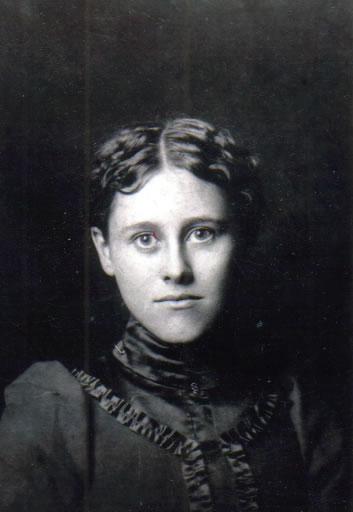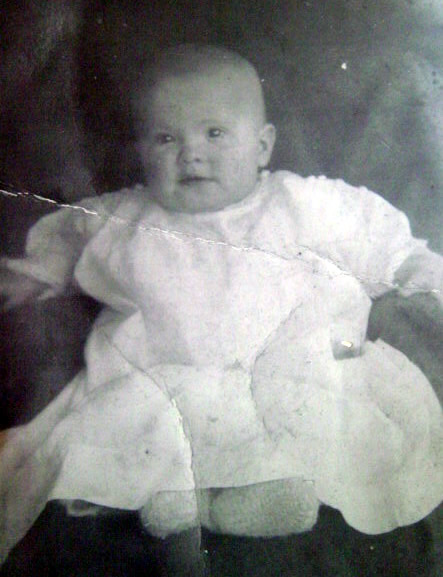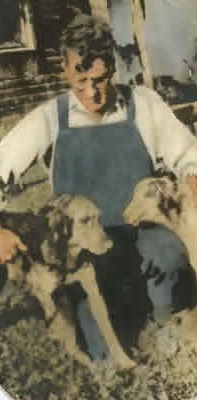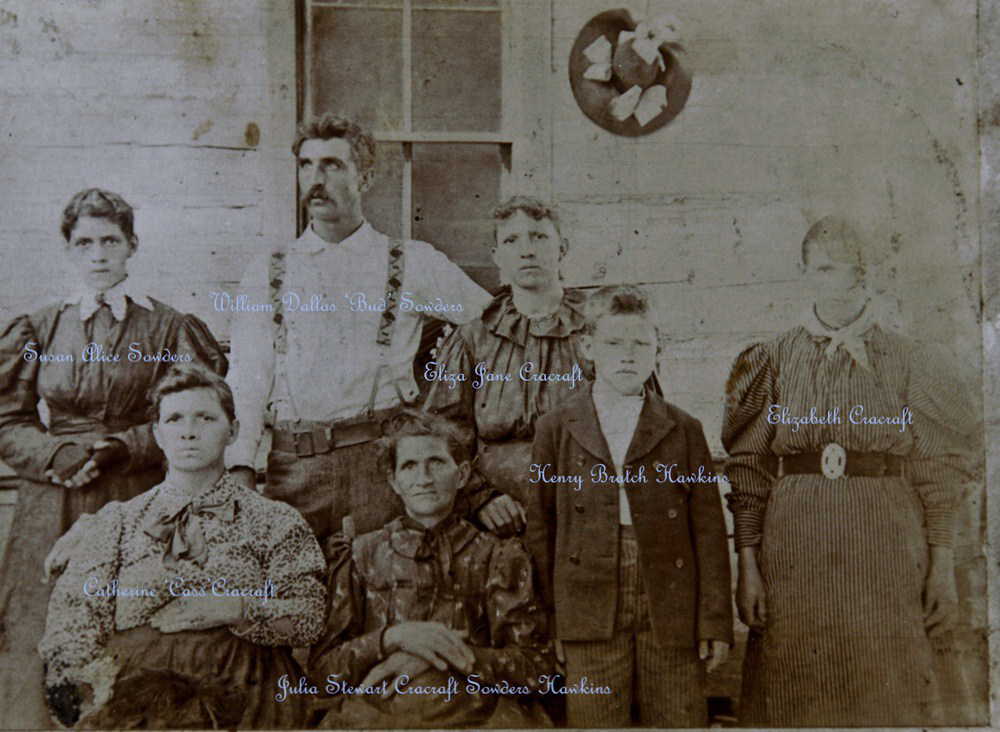
William Dallas (Bud) Sowders
The BLOOMINGTON-BEDFORD SUNDAY HERALD TIMES
JULY 15,1973
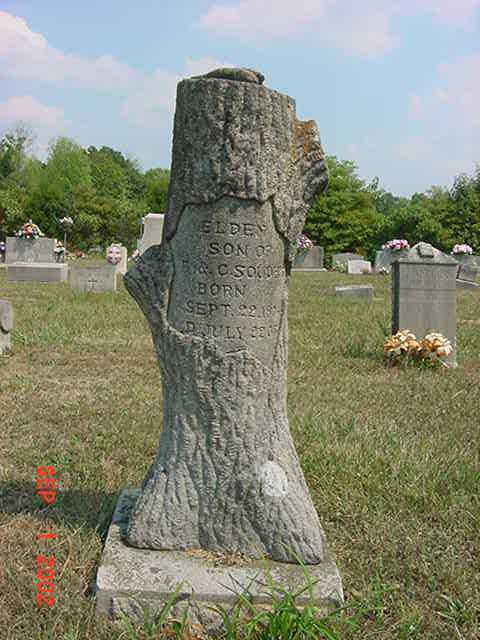
Tombstones And Coffins Were Gifts From Him
CHAPEL HILL-In the small cemetery adjacent to the Pentecostal Church there are a number of tombstones carved to resemble tree trunks that bear no mark of the master who created them. Those who have seen tree trunk shaped headstones may now know that these, at least, were the handiwork of one William Dallas (Bud) Sowders, who was born and raised here and whose body now lies at the foot of a much larger but less artistic tombstone in the same cemetery.
Around his flower-covered grave stands a miniature picket-like fence which is painted white, and carved on the stone to the left of his name is the name of Cora, his wife, who died in 1948. Bud Sowders died at the age of 55 in 1928, ending what his daughter Mrs. Mary Brown, 220½ smith Ave. Bloomington described as a life in which “We felt like we knew him forever”.
“Bud” was a twin. He was named William Dallas and his twin sister was named Susan Alice, Mrs. Brown said. Susan Alice married Chesley Chambers, and they are the grandparents of Ross Fowler.
Although Bud’s occupations were primarily farming and quarry blacksmithing, he was a jack of all trades and could do almost anything. I remember, Mrs. Brown recalled, one of his happier accomplishments, he took an old steering wheel from a car and set it on top of a pole in ball bearings and tied long ropes to it so we kids could have a swing. It was a Maypole, and we six kids had never seen one and we always thought dad invented it.
When folks around the country here needed help they came to Bud. If they were in need of a casket in which to bury their dead, he nailed one together out of native pine, lined it with bleached muslin and gave it to them. The tree-trunks were for the most part also gifts to those who could not afford to buy them. “He wasn’t a carver, but he carved them” Mrs. Brown said. He may not have been a carver in the strictest stone industry interruption of that job classification, but he nevertheless carved handsome tombstones.
During the First world War Bud operated a steam driven gristmill on his farm. When folks took their wheat there to be ground, and the ration stamps, which gave him federal permission to grind it, he always ground some extra, saying, “It is their wheat, why shouldn’t they have enough flour. And he never charged them for grinding the extra amount.
On Saturday it was like a parade coming to our farm,” Mrs. Brown recalled, “People came around from all over the county to have their wheat ground. Dad would start before daybreak and keep working until after dark. Mrs. Alva (Pearl) Rush used to come there. She’ll remember those days”. Mrs. Brown said Pearl walked miles from her home to Bud’s mill carrying a sack of wheat on one hip and a child on the other.
Doctor George Mitchell, now deceased, used to travel by horse and buggy from his home in Smithville to tend to the sick, in Chapel Hill. Lake Monroe wasn’t even a dream back then and the trip was considered short over a dirt road that cut across what is now Fairfax Beach.
Mrs. Brown as a girl attended the valley School in that same vicinity, crossing and recrossing the covered bridge to get there and back home. Clarence Stewart now of Ellettsville was her teacher in the old one room schoolhouse.
“The Hawkinses, Sowders, chiggers, and ragweed just about took over Chapel Hill in those days, Hanford Stewart recalled with a laugh. He is Bob (SPEED & Sport Shop) Stewart’s dad. They must have been good days, for Hanford added, ‘The dirt there was so poor you had to have a pint of whiskey to raise a fuss. George Cracraft had a chestnut orchard there then, too, and used to ship chestnuts all over the world.
Returning to Bud, he once put legs on an oil drum, cut a door into its belly, cut a hole in its top and stuck stove pipe into in and used it for a stove. “Dr Mitchell always said he invented the barrel stove,” Mrs. Brown said. “It wasn’t long after my dad made that stove until everybody in the country had one.
Bud made an iron man to help him cut wood with a cross-cut saw.” He had a spring on that thing and every time he pulled that saw, that iron man would pull it back again,” his daughter laughed.
Bud’s mother was alleged to be part Indian and possessed the power to cure Thrush in infants. This was supposed to have been passed on to her son, but he never used it.
He was a man who could make anything and if he was in need of a particular tool and didn’t have one, he made it. Such was the case with the tools he used to carve flowers in the stone fireplace of the old Cleve Hillenburg house, a large brick home on old Ind. 37, south of Bloomington.
I was only 15 when he died,” Mrs. Brown remembered, “but he was so active and did so many things for people and for us it seemed like I knew him forever.
PS Mrs. Brown is Mary Sowders Thomas to Shorty (common law) and then Brown. Sister to Edger, Everette, Eithel and Vernie. The sisters are Pearl and Margaret.
